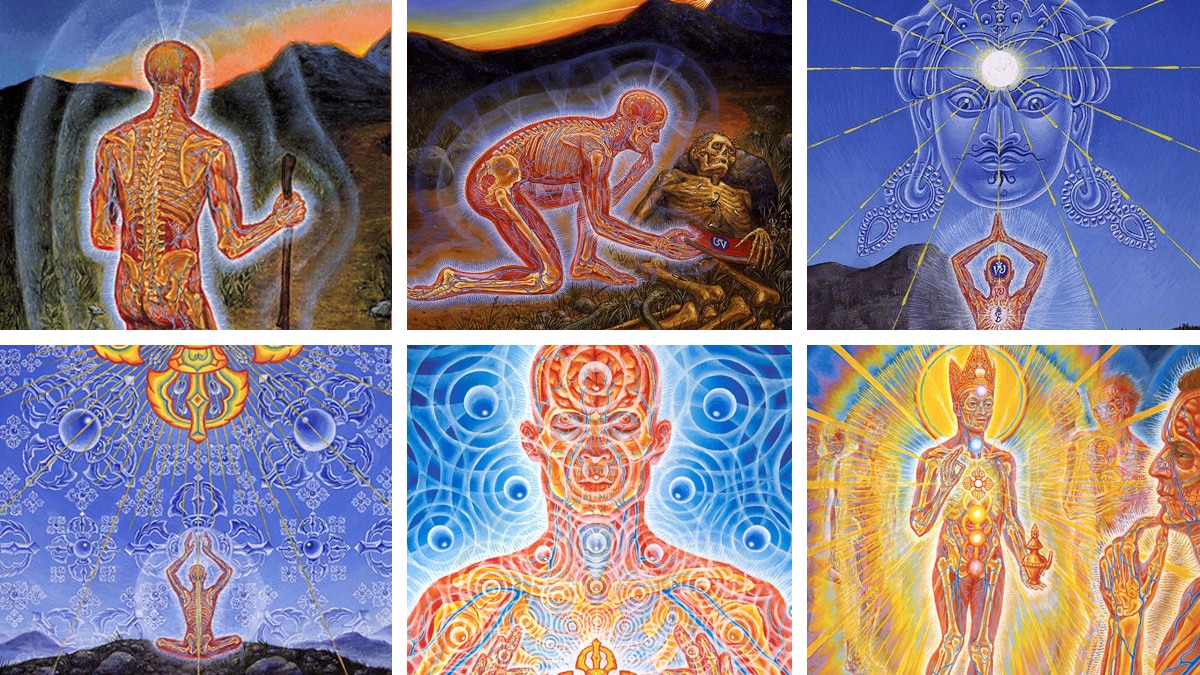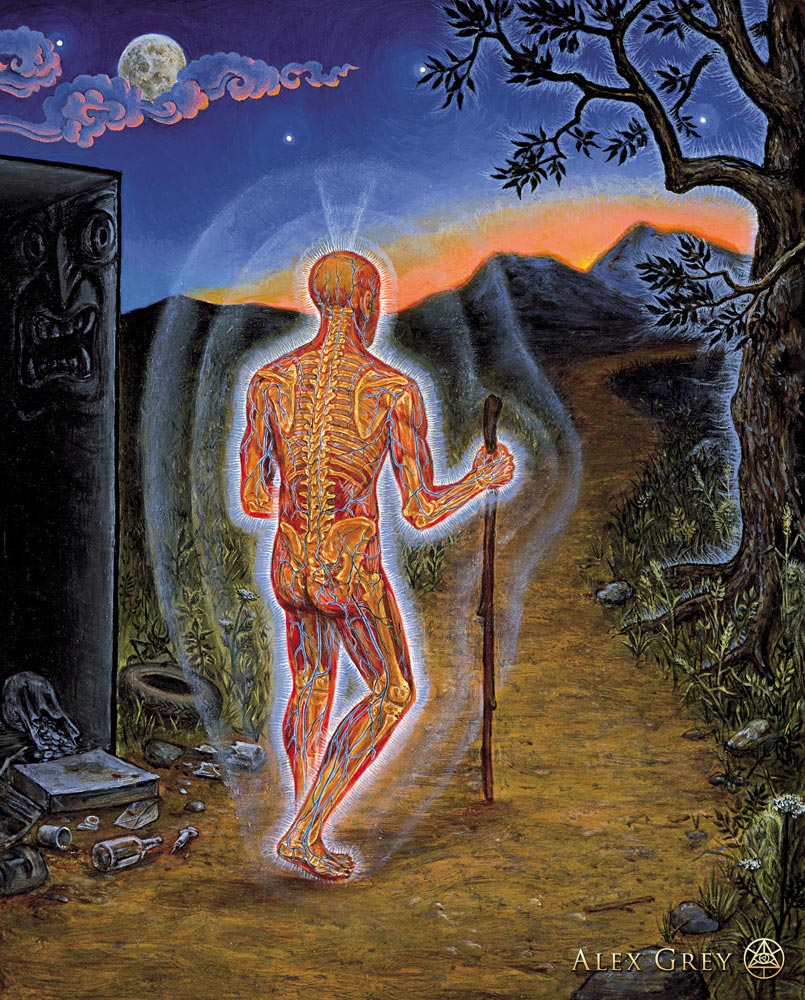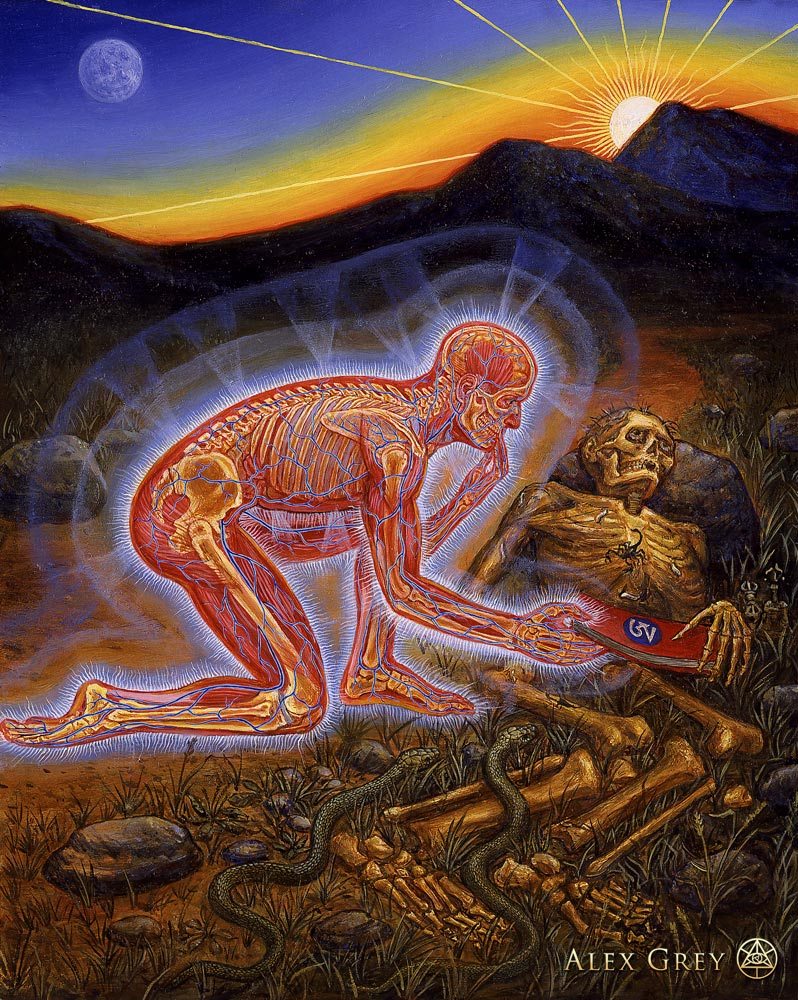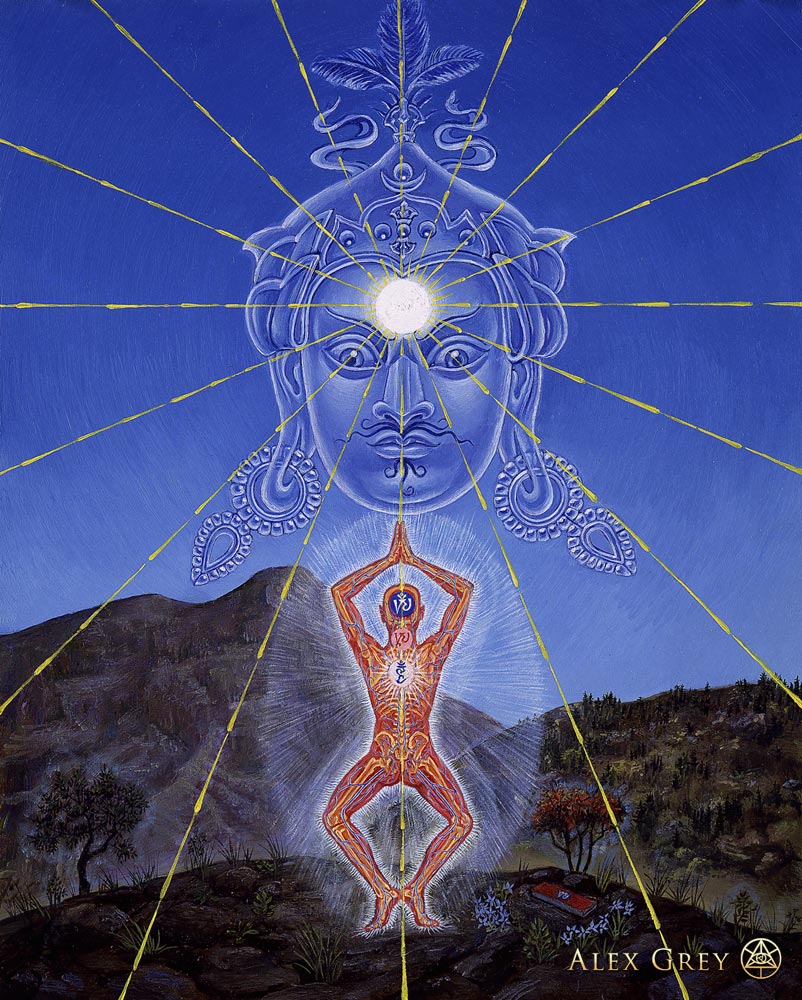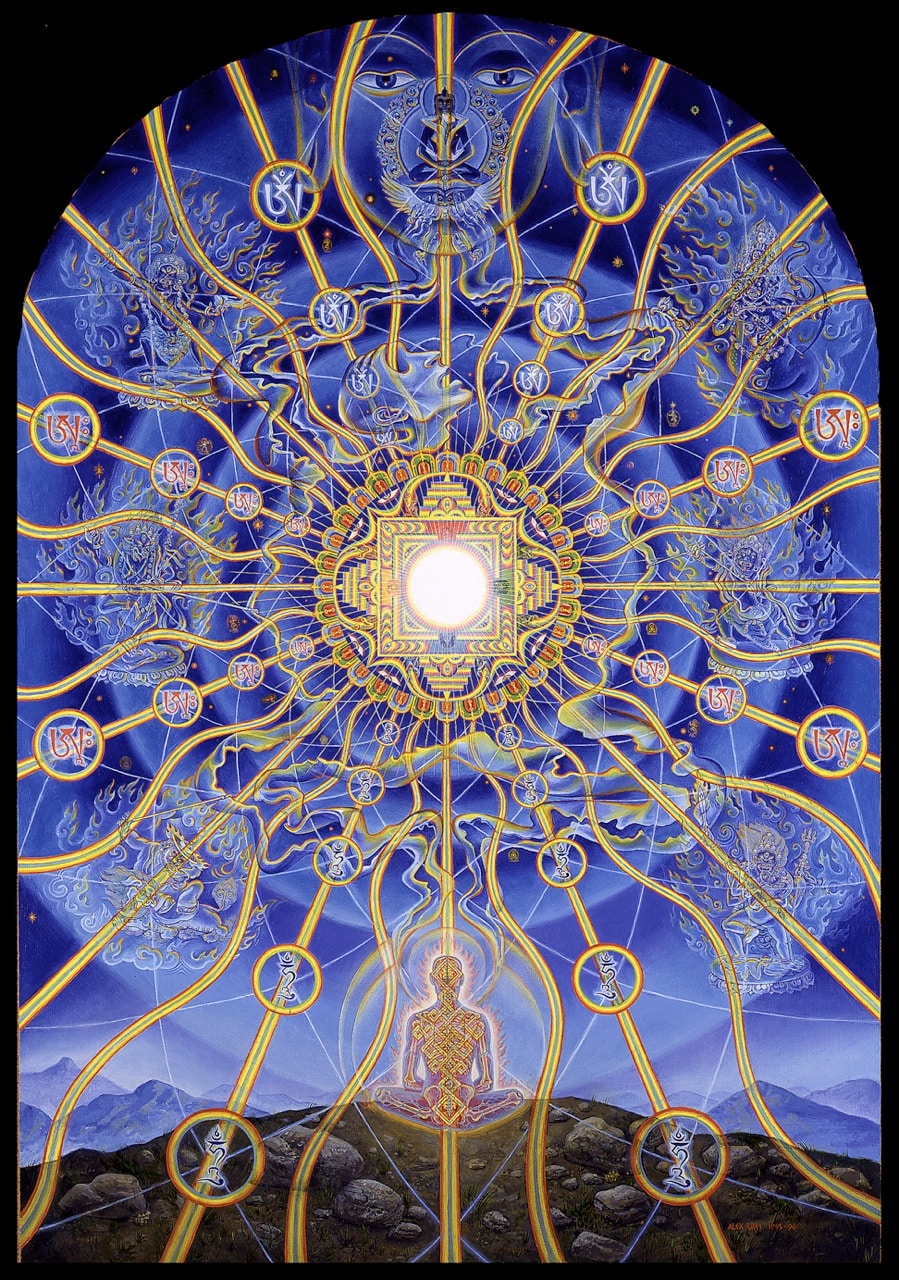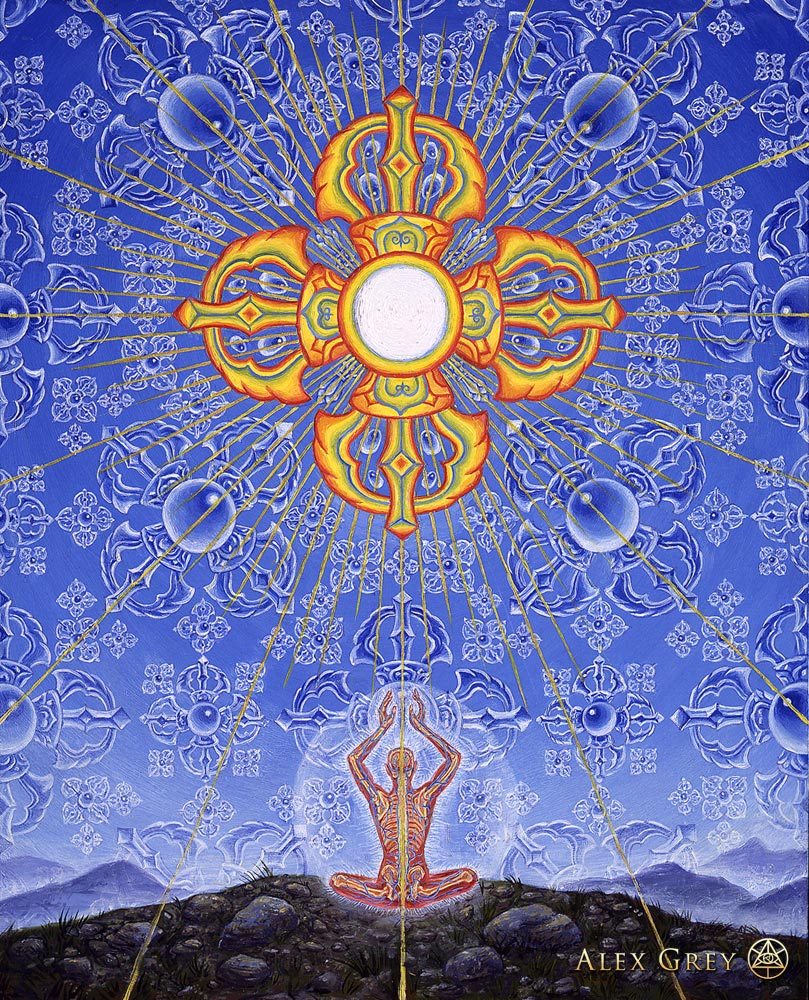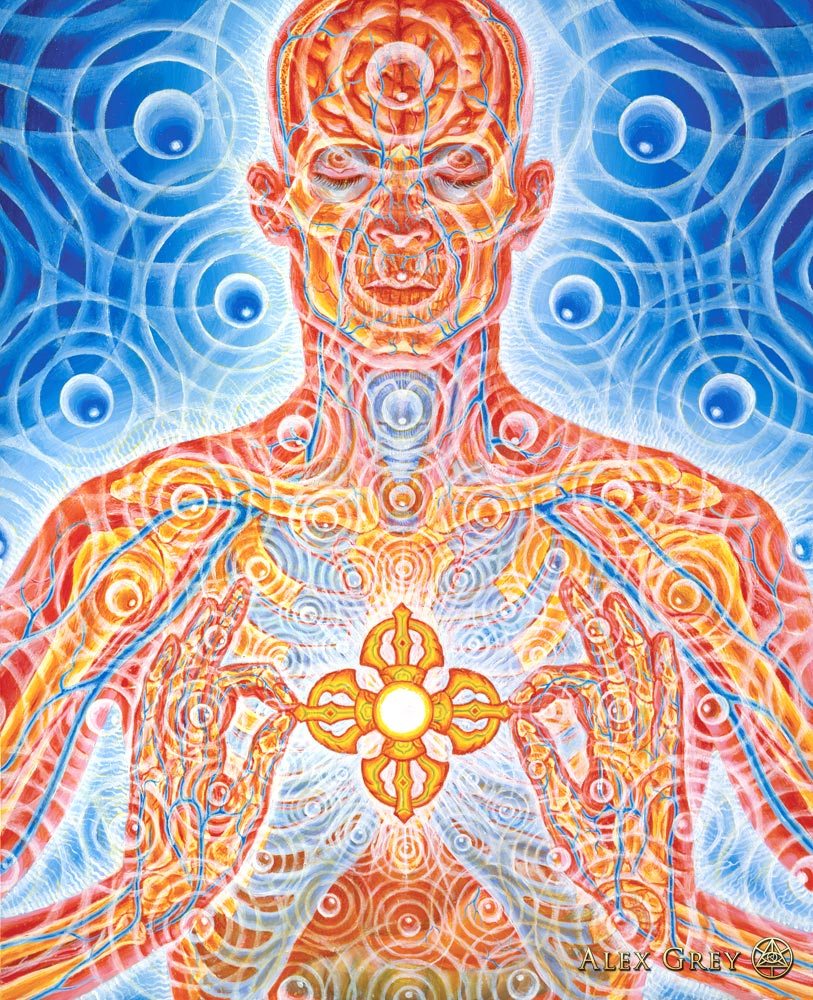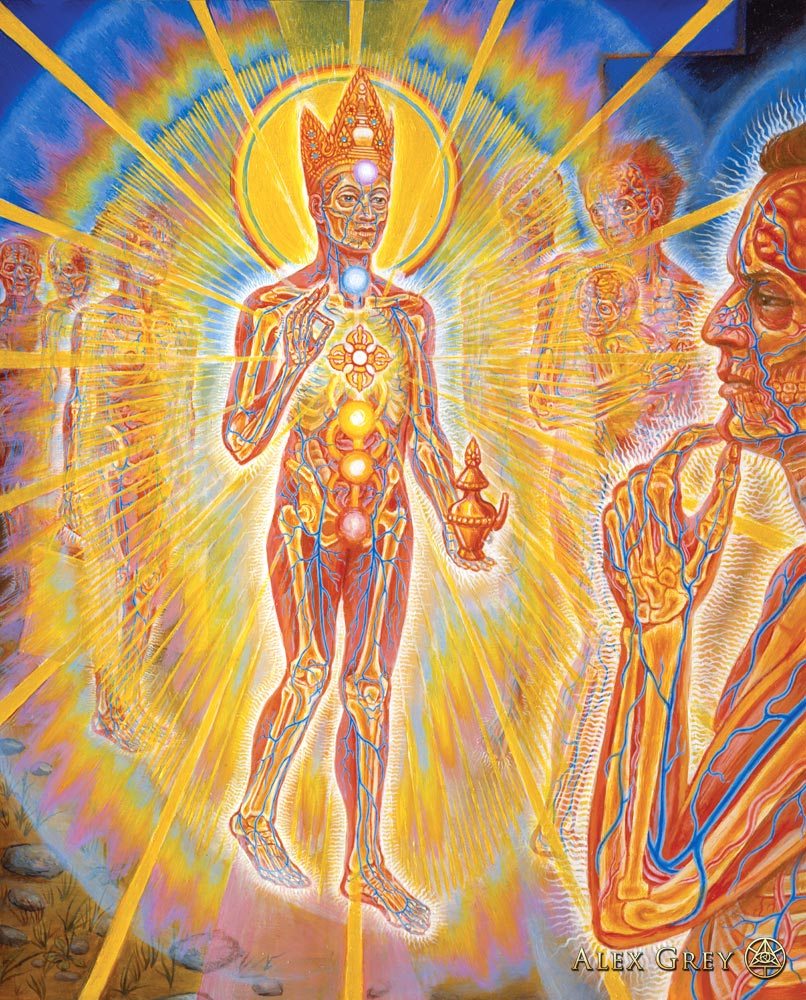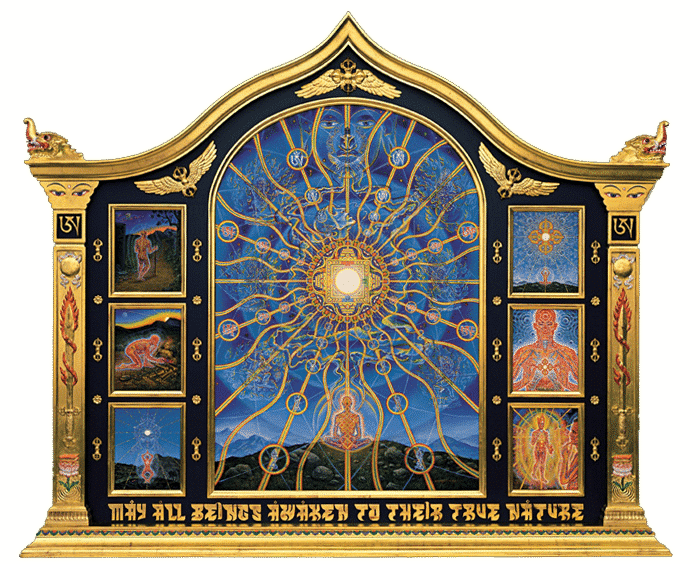
Click images to enlarge
Alex Grey’s Nature of Mind
Alex Grey’s Nature of Mind (1996) consists of seven oil paintings on wood with sculpted gold leaf frame. This format evokes later medieval and Renaissance altarpieces — albeit no altarpiece from those eras looks quite like this one. Such Renaissance works were often architectonic with pilasters or columns supporting a lintel or entablature. With Grey’s piece there is instead a brilliantly inventive arch that takes on an undulating and ascending life of its own, inspirited (with flying vajras below), usurping the pillars’ support logic.
Important artistic altarpieces continued to be produced well beyond the Renaissance. But as early as the 16th century, when altarpieces were in their heyday, their formats came to be adopted outside of liturgical and devotional contexts, as with Bosch’s Garden of Earthly Delights, a large-scale triptych for an aristocrat’s town house, no longer a panel for private prayer, but now a work of art of high narrative invention replete with the artist’s self-portrait.
Leaping ahead, modernist artists of the twentieth century—most notably, Max Beckmann and Francis Bacon — adapted altarpiece formats for the exhibition sphere of galleries and museums. For Beckmann, the triptych format is to empower his painterly allegories with mythic depths of meaning; while for Bacon, it enables a complication of linear narrative time in lieu of the pulsations of bodily sensations and vital energies. In both cases the sense of the sacred is at best a weak echo.
Unlike these two great modernists, Grey reaches back to the sacred origins of the format, re-invents its very look, and imbues it with a spiritual content proper to the direct realization of spiritual realities beyond mere belief alone.
Rather than a more familiar Christian or Western imagery, the iconography is Tibetan Buddhist. As Grey explains:
There are numerous vajra symbols throughout the various panels of the Nature of Mind painting, and in the frame surrounding the images the vajra motif is found sometimes in winged guises. In Tibetan Buddhism, vajra (also called Dorje) carries the association of transformative spiritual knowledge and is a symbol of the mind’s true essence. Other sculptural details on the frame include Manjushri’s sword of discriminating wisdom hovering above a sacred text that is emerging from a lotus. The lotus is a symbol of transformation because it begins life in the murky underwater mud and grows up towards the light, opening as a beautiful pure white blossom. The Melong, or circular mirror, at the top of the frame pillar is a Dzogchen symbol of the ability to distinguish between he conceptual mind and the true nature of mind…. The Tibetan syllable Ah is used as a mantra symbolizing primordial perfection; it is founded on both the frame and in the second painted panel, on a book cover held by the dead yogi. The dragonlike beings sculpted on the right and left sides of the frame are hybrid guardians called makaras with attributes of elephants and crocodiles. 1
The inscription below the three columns of panels, having a Sanskrit or Tibetan look, is a prayer in English: “May all beings awaken to their true nature”—the Kosmocentric moral aspiration that is the innermost expression and heart essence of the “Nature of Mind.”
Let these basic art historical notes serve as backdrop to Ken and Alex’s scintillating interpretations and pointing out instructions—as you take the time to deepen authentic engagement with this contemporary integral masterwork.
Written by Michael Schwartz
1 Alex Grey, Transfigurations (Rochester, Vermont: Inner Traditions, 2001), p 112.
About Ken Wilber
Ken Wilber is a preeminent scholar of the Integral stage of human development. He is an internationally acknowledged leader, founder of Integral Institute, and co-founder of Integral Life. Ken is the originator of arguably the first truly comprehensive or integrative world philosophy, aptly named “Integral Theory”.

